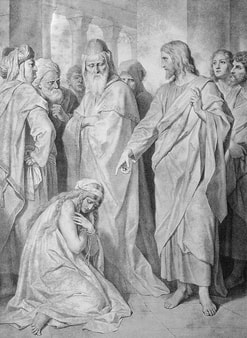|
May 7th is the Day of the Mosques in Bosnia and Herzegovina. On this day in 1993, the Republika Srpska Army (the army of the Bosnian Serbs) destroyed the famous beautiful Ferhadija (Ferhat Pasha) Mosque in the center of Banja Luka, which stood there since 1579. At the time of its destruction, it was listed as UNESCO's protected heritage. In 2001, during the ceremony marking the beginning of the mosque's reconstruction, a mob of a few thousand Bosnian Serbs attacked about 300 people who gathered to lay the cornerstone. Many people were injured. One of the congregants, Murat Badić, was hit by a rock and later died in a hospital. Until today no one has been prosecuted for his murder. He is the last man stoned to death in Europe. The Bosnian Serb mob attacks the Bosniaks who arrived to Banja Luka to witness the beginning of the reconstruction of Ferhadija Mosque, May 7, 2001 According to the 1991 census, just one year before the aggression against Bosnia and Herzegovina began, Banja Luka had a population of 143,079, making it the second-largest city in Bosnia after Sarajevo. Serbs constituted about one-half of that number, while Bosniaks (Muslims) and Croats constituted about one-third of the population. After Bosnia proclaimed its independence, the Serbs decided to start a genocidal campaign of ethnic cleansing to remove the Bosniak and Croat populations from the areas in Bosnia that the Serbs marked as Serbian territories that would eventually join Serbia. Bosniaks and Croats in Banja Luka were heavily discriminated against. Many were forced to sign over their homes and other property to Serbs under duress. Most of them left Banja Luka, never to return. The Serbs destroyed all 14 mosques in the city, including Ferhadija. These events happened in a place where no war operations took place. There was no fighting. There was only repression, ethnic cleansing, and the destruction of Muslim and Catholic heritage. This campaign was part of the "torture, humiliate, kill" policy by the Bosnian Serb leadership. The idea was to make Banja Luka the center of Republika Srpska, with no place for Bosniaks and Croats. In effect, this is what Banja Luka has become and still is. All in all, during the aggression against Bosnia in the 1990s, 614 mosques were destroyed, mainly by the Bosnian Serbs and some by the Bosnian Croats. The Islamic Community of Bosnia and Herzegovina restored almost all of these mosques with the help of many friendly governments worldwide. No one has ever been prosecuted for destroying Islamic heritage in Banja Luka. On that faithful day, May 7th, 2001, a group of about 300 people gathered to begin the reconstruction of Ferhadija. It was a symbolic gathering, marking the resilience of the Bosniak people, indicating that - in spite of the horrific crimes committed against them less than a decade earlier - they were there to stay and reclaim what is rightfully theirs. The unruly, blood-thirsty mob of Bosnian Serbs attacked them. The local police provided little to no protection. The worshippers were hit by rocks, insulted, beaten up, and humiliated. The mob threw rocks, burnt vehicles, threw a pig's head into the mosque's compound, and caused general mayhem (see the video above). The representatives of several embassies, including Great Britain, Sweden, and Pakistan, and the head of the UN in Bosnia had to shelter in the Islamic center. More than thirty Bosniaks were injured. Murat Bandić died later in Banja Luka's hospital due to stoning. There is a famous and, most likely, apocryphal story in the Old Testament where an adulterer was brought before Jesus. The Jews wanted to see if Jesus would apply or disobey the Old Testament punishment for adulterers, i.e., stoning. Sensing their intention, Jesus famously proclaimed, "Let him who is without sin cast the first stone." The people gathered around him departed. No such hesitation existed in Banja Luka on May 7th, 2001. There was no sin and no crime in stoning and killing an innocent Muslim. Source: Wikipedia Commons
9 Comments
12/30/2023 02:23:35 am
UV radiation and fluctuating temperatures opting for materials such as corrosion-resistant aluminum or stainless steel ensures longevity and durability. Marine-grade tables not only resist rust but also maintain their structural integrity.
Reply
12/30/2023 02:50:18 am
Before reintegrating them into your seasonal rotation handle your leather coats with care to prevent unnecessary wear and tear. When putting on or taking off your coat, avoid excessive force or tugging that could strain seams or damage zippers.
Reply
12/30/2023 02:55:40 am
From spacious totes to sleek crossbody styles, shoulder bags are designed to complement various outfits and occasions. Explore a world of textures, colors, and designs, and find the perfect shoulder bag that effortlessly transitions from day to night.
Reply
12/30/2023 03:00:56 am
Through in-depth tutorials, students refine their skills in crafting mega volume fans, exploring techniques for achieving a bold and captivating lash effect. Mega volume lash training is ideal for those craving the expertise to offer clients.
Reply
12/30/2023 03:06:38 am
This metabolic dysfunction can lead to feelings of tiredness and lethargy. Additionally, insulin resistance, a hallmark of type 2 diabetes, can contribute to fatigue by hindering the uptake of glucose by cells.
Reply
12/30/2023 03:11:29 am
Investing in professional repairs ensures a durable and aesthetically pleasing result, ultimately saving homeowners from potential long-term expenses associated with neglecting driveway maintenance.
Reply
12/30/2023 03:13:50 am
Incorporating elements of Christian theology, these jokes sometimes delve into deeper reflections on the significance of Christ's birth, offering moments of contemplation amid the laughter.
Reply
12/30/2023 03:19:05 am
MOTI S Lite disposable vape not only excels in performance but also elevates the vaping experience with its sleek and sophisticated design. With a slim profile and a range of eye-catching colors the S Lite combines aesthetics with functionality.
Reply
Leave a Reply. |
Ermin SinanovićPolitical scientist. Islam scholar. Southeast Asia and the Balkans analyst. Archives
May 2023
Categories |

 RSS Feed
RSS Feed